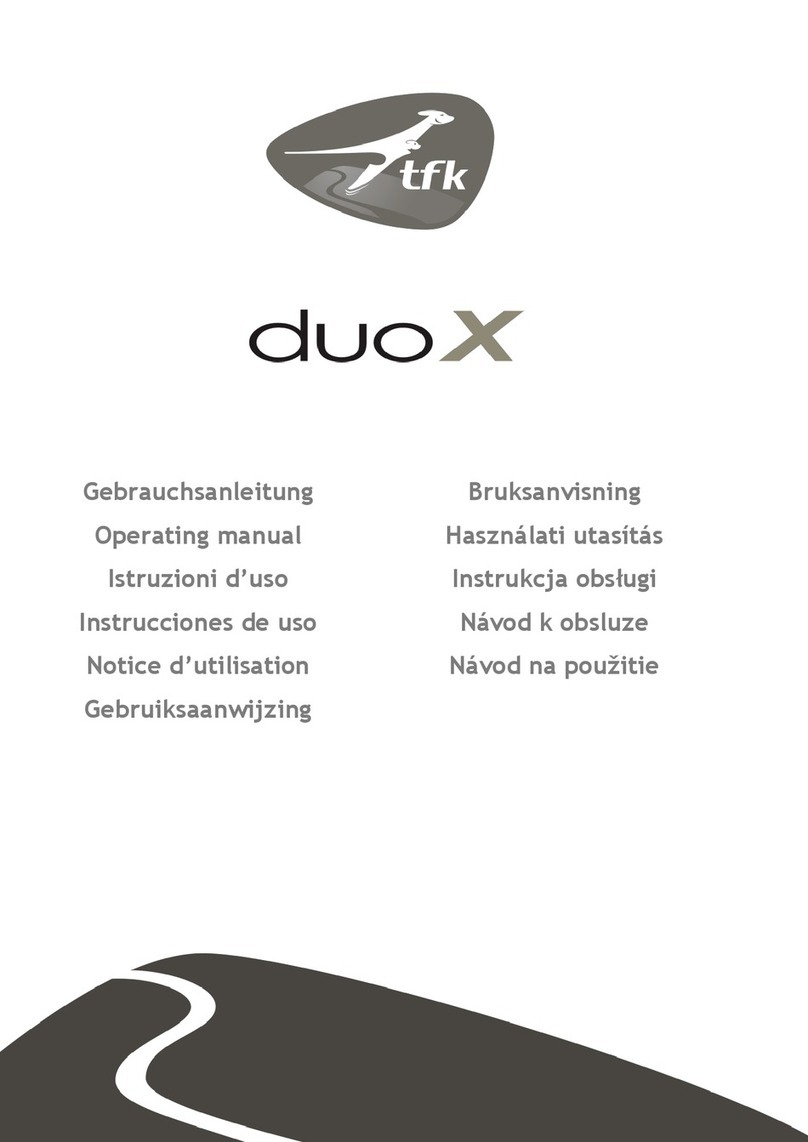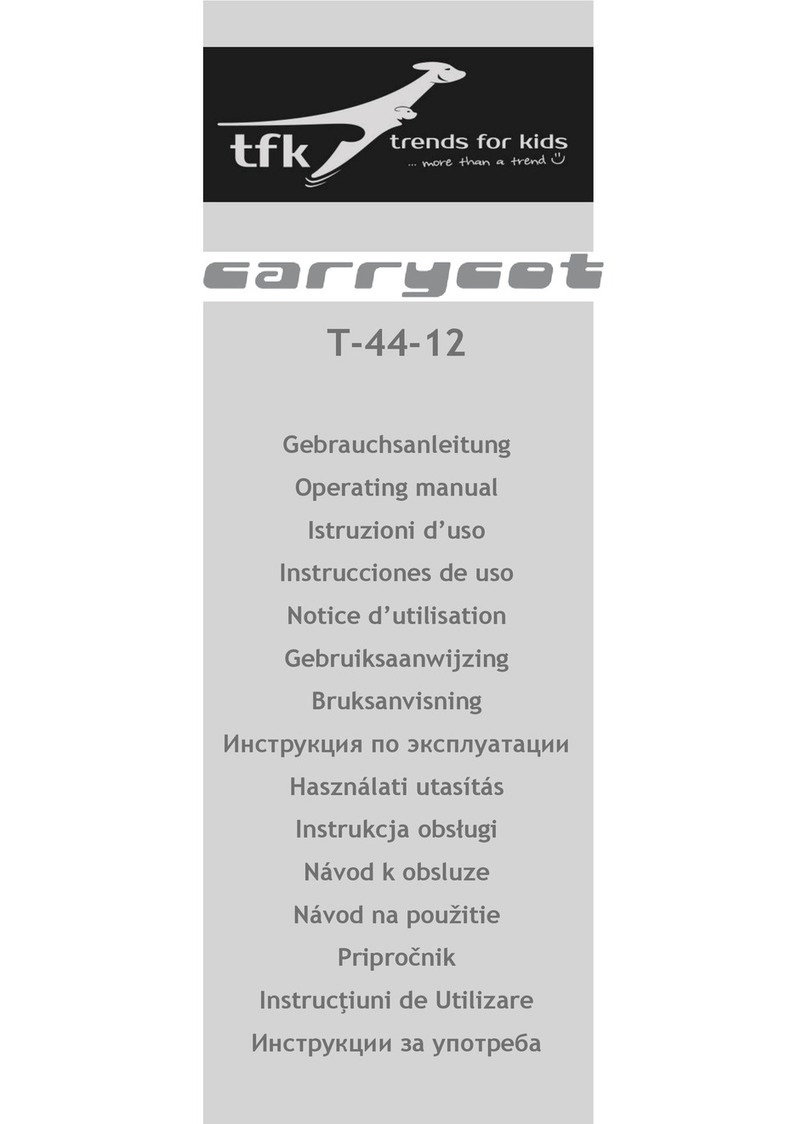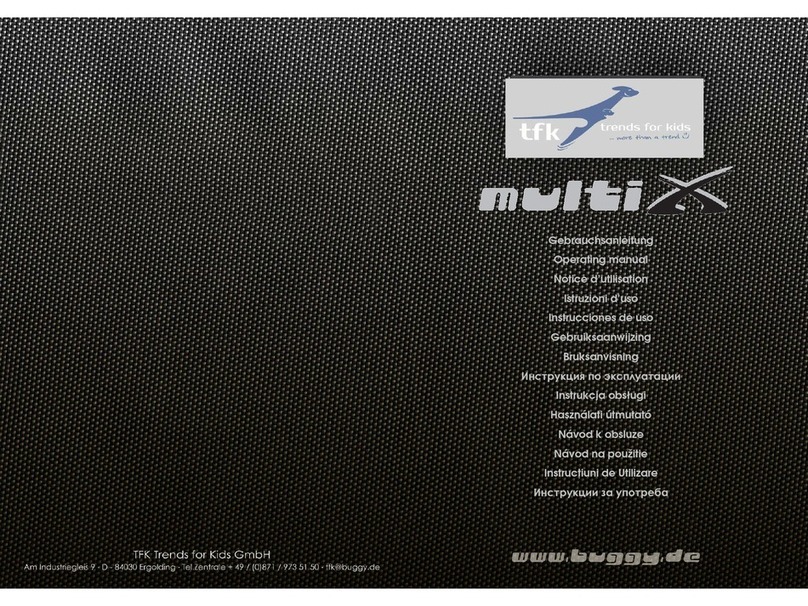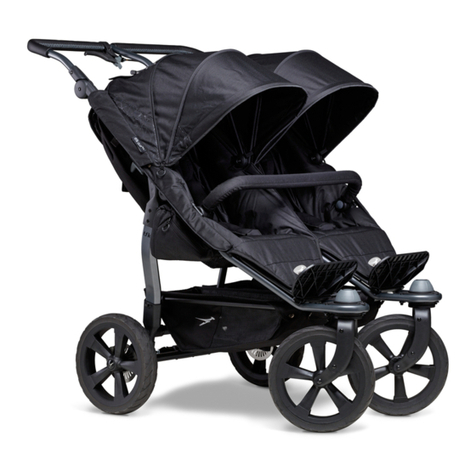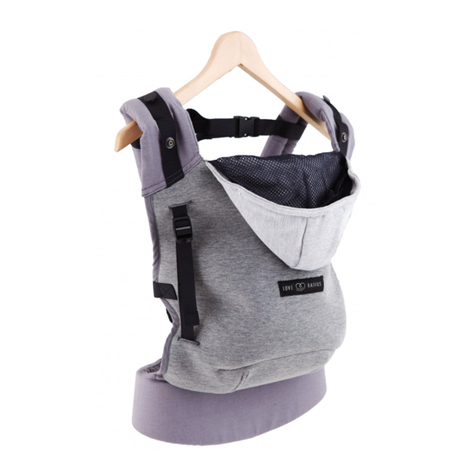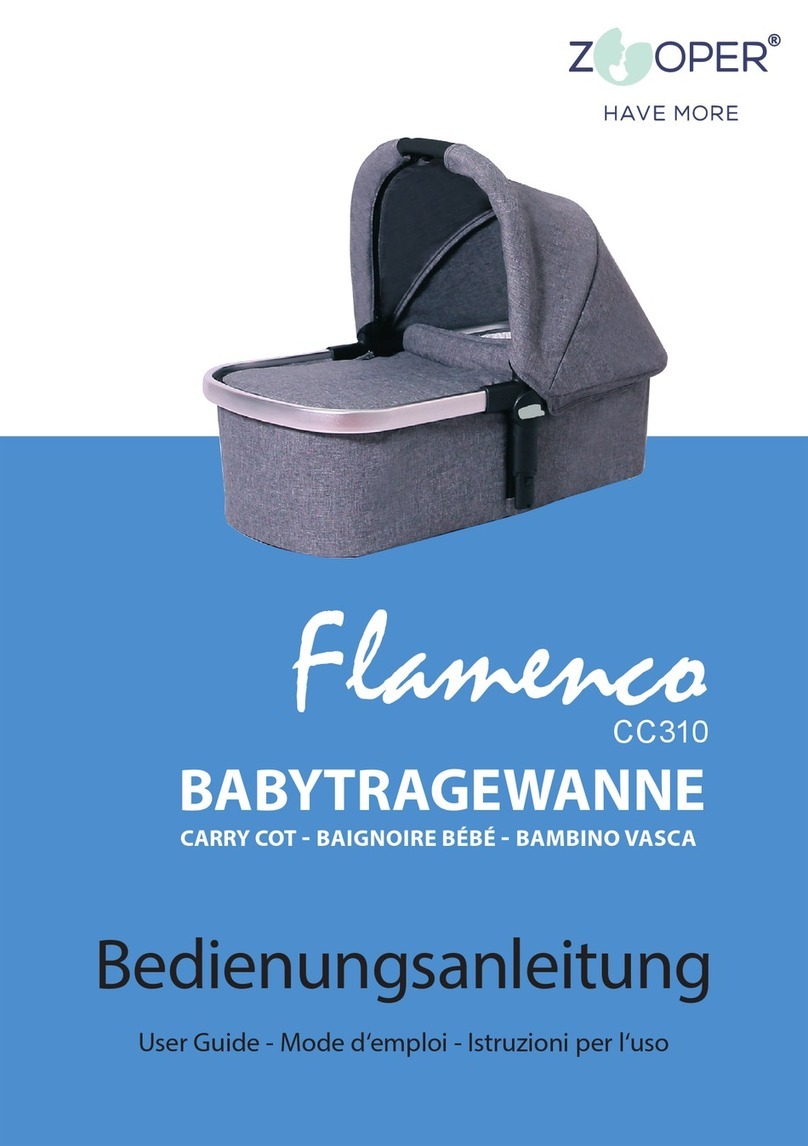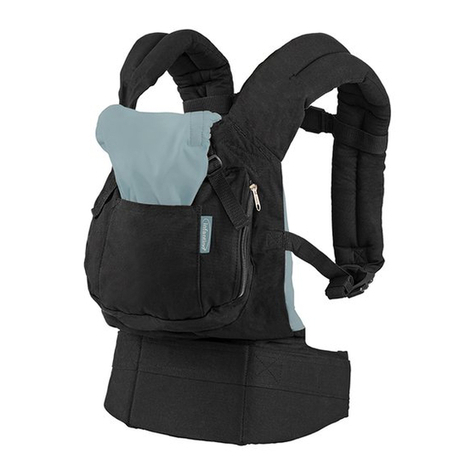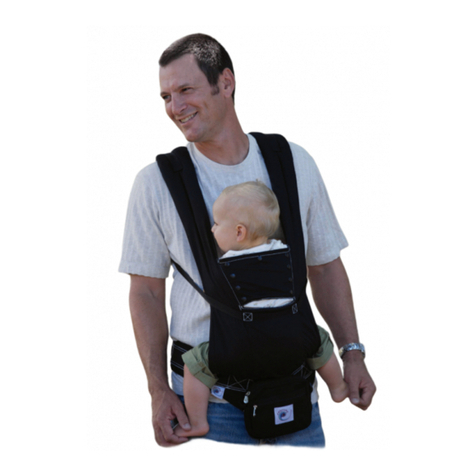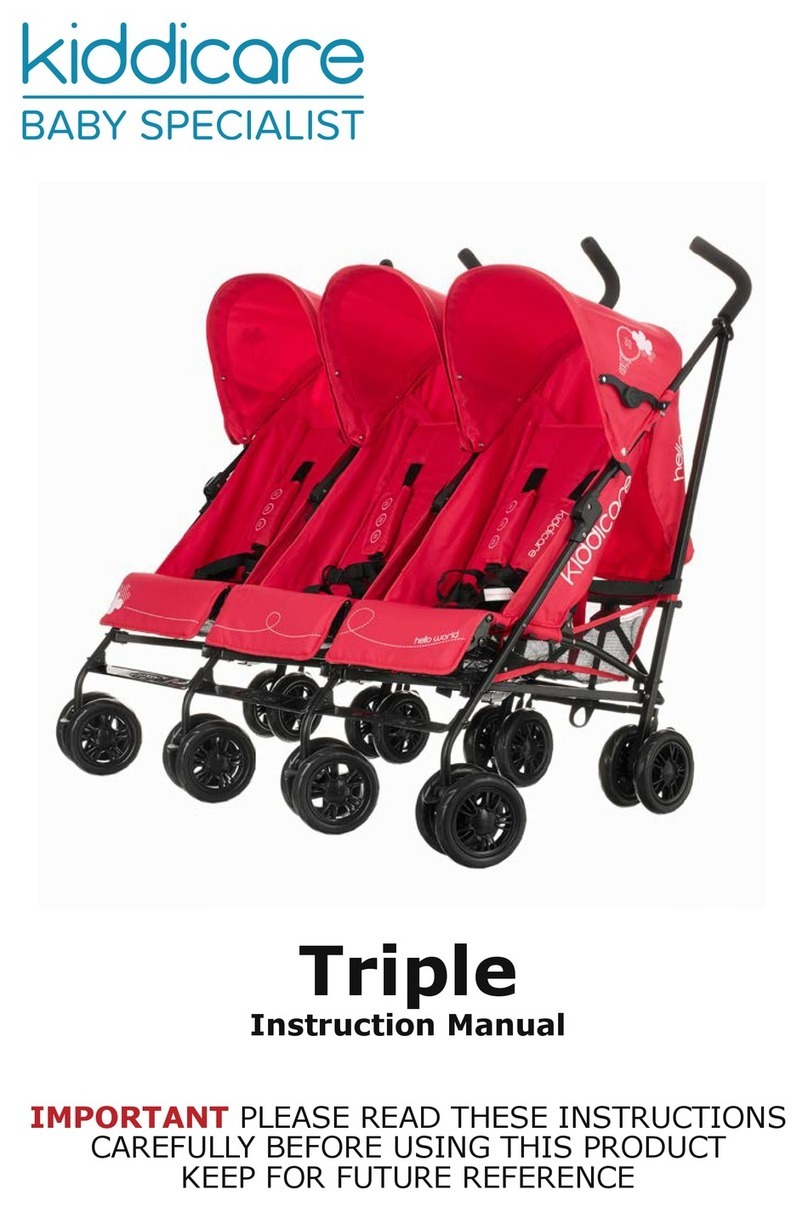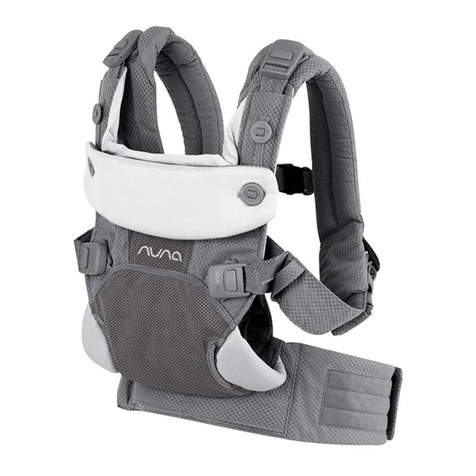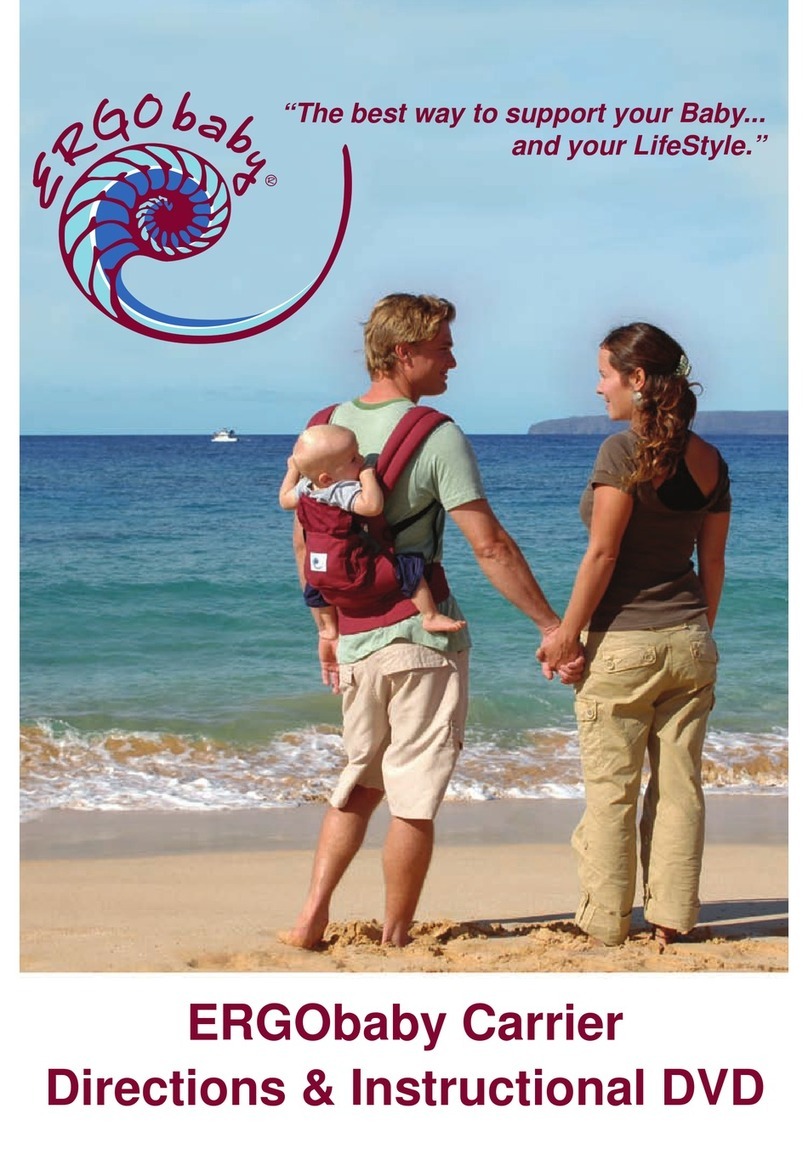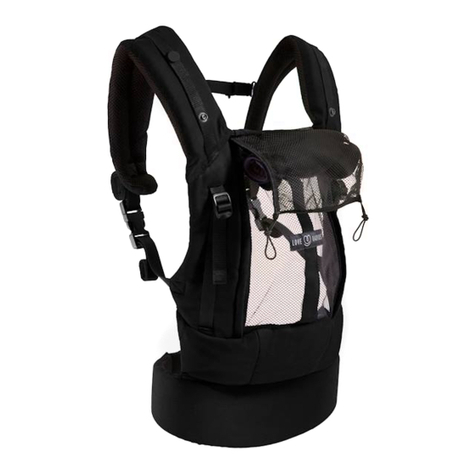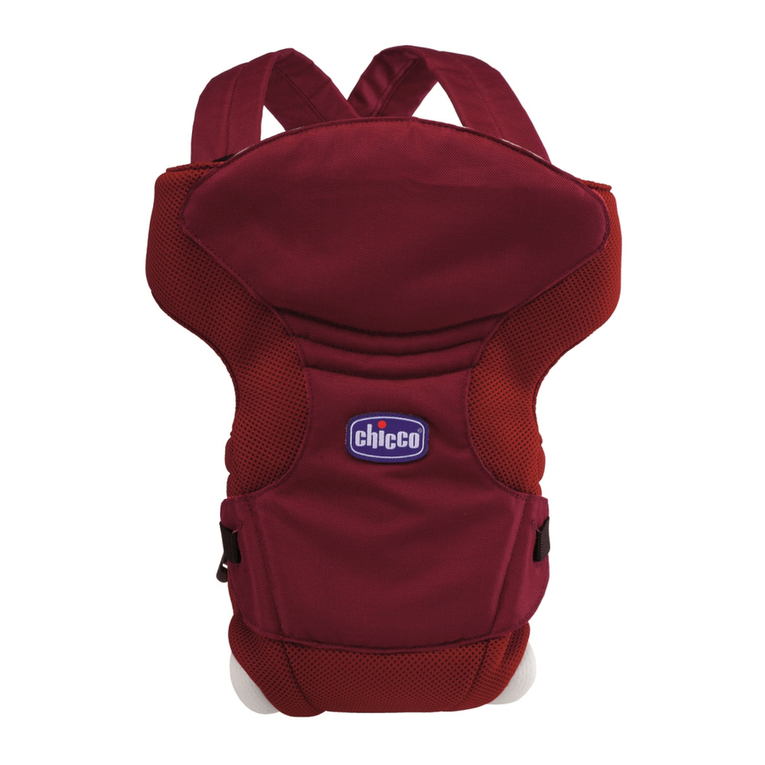TFK Joggster Adventure User manual

1
Gebrauchsanleitung
Operating manual
Istruzioni d’uso
Instrucciones de uso
Notice d’utilisation
Bruksanvisning
Gebruiksaanwijzing
Használati utasítás
Instrukcja obsługi
Návod k obsluze
Návod na použitie
Pripročnik
Instrucţiuni de Utilizare
Инструкции за
употреба
Product video on
www.buggy.de
QR Code

2
I
1
II
2
3
4
III
a
a
a
b
IV
5
6
d
V
11
10
9
8
7
VI
13
12
VII
16
VIII
II
17
III
18
19
IX
20
22
21
X
XI
23
XII
24
25
26
XIII
27
4
2
1
28
XIV
XV
29
14
14
30
31

3
DE Gebrauchsanleitung und Garantiebestimmungen 4
GB operating manual and warranty conditions 8
IT Istruzioni d’uso e condizioni di garanzia 12
ES Instrucciones de uso y condiciones de garantía 16
FR Notice d’utilisation et dispositions de garantie 20
NO Bruksanvisning og garantibestemmelser 24
SE Bruksanvisning och Garantipolicy 28
NL Gebruiksaanwijzing en garantiebepalingen 32
HU Használatiútmutatóésgaranciávalkapcsolatosrendelkezések 36
PL Instrukcja obsługi oraz warunki gwarancji 40
CZ Návod k obsluze a zàruční podmínky 44
SK Návod na použitie a podmienky záruky 48
SL Pripročnik in garancijski pogoji 52
RO Instrucţiuni de Utilizare şi Condiţii de acordare a Garanţiei 56
BG Инструкции за употреба и гаранция 60

4
Gebrauchsanleitung und Garantiebestimmungen
Herzlich willkommen in der Welt von TFK.
Bitte nehmen Sie sich ein Paar Minuten Zeit und lesen Sie die folgenden
Hinweise vor der Benutzung sorgfältig durch. WICHTIG: Bewahren Sie die
Anleitung für spätere Rückfragen auf. Wenn Sie diese Hinweise nicht
beachten, kann die Sicherheit Ihres Kindes beeinträchtigt werden! Beachten
Sie bitte auch die Sicherheitshinweise bei der Benutzung des Joggster
Adventure zum Joggen!
SICHERHEITSHINWEISE + WARNUNGEN
-WARNUNG: Lassen Sie Ihr Kind nicht unbeaufsichtigt!
-WARNUNG: Diese Sitzeinheit ist für Kinder unter 6 Monaten nicht geeignet.
Gewicht bis maximal 15 kg!
-WARNUNG: Dieser Wagen ist mit Quickfix oder MultiX Wanne für Kinder ab
0 Monaten bestimmt!
-WARNUNG: Vergewissern Sie sich, dass Ihr Kind beim Aufklappen und
Zusammen-klappen des Wagens außer Reichweite ist, um Verletzungen zu
vermeiden.
-WARNUNG: Befördern Sie immer nur ein Kind!
-WARNUNG: Vergewissern Sie sich vor Gebrauch, dass alle Verriegelungen
geschlossen sind!
-WARNUNG: Lassen Sie Ihr Kind nicht mit dem Wagen spielen.
-WARNUNG: Am Schieber befestigte Lasten beeinträchtigen die
Standfestigkeit des Wagens!
-WARNUNG Es ist zu überprüfen, dass der Kinderwagenaufsatz oder die
Sitzeinheit oder der Autokindersitz vor Gebrauch korrekt eingerastet ist.
-WARNUNG: Verwenden Sie einen Sicherheitsgurt, sobald ihr Kind
selbständig sitzen kann.
-Den Wagen nie ohne gesicherte Parkbremse abstellen!
-Heben Sie den Wagen niemals mit einem Kind darin hoch!
-Benutzen Sie keine (Roll-) Treppen, wenn sich ein Kind im Wagen befindet!
-Autokindersitze, die in Verbindung mit einem Fahrgestell verwendet
werden, ersetzten weder eine Wiege noch ein Kinderbett. Sollte Ihr Kind
Schlaf benötigen, sollte es dafür in einen geeigneten Kinderwagenaufsatz,
eine geeignete Wiege oder ein geeignetes Bett gelegt werden; Den
Wagen nur an festen Rahmenteilen anheben!
-Keine TFK - fremden Zubehörteile montieren!
-Die maximale Beladung im Korb ist 5 kg! Jede andere Tasche und der
Karabiner Haken am Verdeck darf mit max 0,5kg beladen werden.
-Reifenluftdruck 1,2 bar.
Bitte überprüfen Sie in regelmäßigen Abständen die Bremsen und
Verbindungen auf ihre Funktion! Verwenden Sie im Reparaturfall nur originale
Ersatzteile!

5
GEBRAUCHS- UND MONTAGEANLEITUNG
- (Abb.I) Um den Joggster Adventure benutzen zu können, klappen Sie
immer zuerst den unteren Teil des Rahmens auf. Drücken Sie den
Korbrahmen (1) mit der Hand oder dem Fuß nach unten, bis er hörbar
einrastet. Dies ist sehr wichtig für die Stabilität.
- (Abb.II) Schwenken Sie anschließend die Schiebestange (2) nach oben, bis
die rote Doppelsicherung (3) einrastet. Schließen Sie nun die Verriegelungen
(4) links und rechts über dem Faltgelenk.
-(Abb.III) Der Sitz wird mit je 3 Druckknöpfen (a) an beiden Seiten am
Rahmen befestigt. Zusätzlich wird er am Fußbrett mit 2 Druckknöpfen (b)
befestigt.
-(AbbIV) Stecken Sie das Verdeck (5) links und rechts in die
Halterungen (6) an der Schiebestange (2). Anschießend wird es mit vier
Druckknöpfen (d) am Sitz befestigt.
- (Abb.V) Bei der Erstmontage der hinteren Räder, setzen Sie zunächst den
Bremssattel (7) auf die Bremsscheibe (8). Stecken Sie dann die Achse (9) erst durch
die Radnabe und dann in die dafür vorgesehene Bohrung in der Hinterachse, bis
sie einrastet. Anschließend hängen Sie das Bremskabel (10) in die Aufnahme am
zentralen Bremszylinder (11) ein und prüfen sie durch betätigen des Handbrems-
Hebel (24) an der Schiebestange (2) die Funktion der Bremse.
- (Abb.VI) Stecken Sie das Vorderrad (12) in die dafür vorgesehene Öffnung
bis es hörbar einrastet. Auf Position 1 kann sich das Vorderrad (12) frei drehen
und auf Position 2 steht es fest. Wenn Sie den roten Knopf mit dem Pfeil (13)
eindrücken, können Sie das Rad nach unten entnehmen. In der
Radaufnahme befinden sich 2 Madenschrauben (14), mit denen Sie den
Geradeauslauf des Joggster Adventure bei Bedarf einstellen können.
- (Abb.VII) Die Sitzlehne ist stufenlos mit dem Band verstellbar. Drücken Sie
dazu die beiden Plastikteile (16) an der Rückenlehne zusammen und
Verstellen den Sitzwinkel mit dem Band.
- (Abb.VIII) Die Fußraste (17) kann nach oben geklappt werden. dazu
schwenken Sie sie hoch und sichern sie unten durch den Metallbügel (18).
Durch anklappen des Fußbretts (19), kann dieses in drei Positionen
verschoben werden.
- (Abb.IX) Die Basisadapter (20) werden auf die Stahlstreben von oben
aufgesteckt, bis sie verriegeln. Zum Abnehmen einfach den roten Knopf drücken.
Darauf werden entsprechend die Adapter für die TFK Wannen Quickfix oder MultiX
gesteckt. Adapter sind auch für die Autositze MaxiCosi, Recaro Previa, Cybex
ATON, BeSafe IziGo, Kiddy Evoluna und Römer baby Safe verfügbar.
- (Abb.X) Zur Befestigung des Bauchbügels (21), öffnen Sie die Stofflappen
am Bezug und stecken Sie die Befestigung über das Rahmenrohr. Sichern sie
ihn durch umlegen der Klemmhebel (22). Durch drücken der roten Knöpfe
links und rechts können Sie ihn in verschiedene Positionen schwenken.
-(Abb.XI) Die Schiebestangenhöhe kann durch drücken der zwei
Verstellgelenke (23) eingestellt werden.

6
- (Abb.XII) Die Handbremse (24) ist zugleich Lauf- und Parkbremse. Um die
Parkbremse zu aktivieren, müssen Sie den Bremshebel (24) ganz anziehen
und den roten Parkhebel (25) komplett umlegen, damit der Bremshebel (24)
maximal angezogen bleibt und die Bremse dauerhaft blockiert. Zum Lösen
müssen Sie den Bremshebel (24) anziehen und den Parkhebel (25) wieder
entriegeln. Falls die Bremswirkung nachlässt, können Sie eine Feineinstellung
vornehmen. Drehen Sie dazu die Stellschraube (26) am Bremsgriff entgegen
dem Uhrzeigersinn und prüfen Sie die Bremswirkung erneut.
- (Abb.XIII) Um den Joggster Adventure zusammenzulegen, klappen Sie das
Fußbrett (19) an, lösen die beiden Verriegelungen (4) über dem Faltgelenk
und die Doppelsicherung (3) und schwenken die Schiebestange (2) nach
vorne. Ziehen Sie nun den Korb (1) mit einem Ruck nach oben. Benutzen Sie
dazu den Tragegurt (27) am Korb. Jetzt können Sie den Wagen am Gurt (27)
hochnehmen, dabei klappt er zusammen.
- (Abb.XIV) Schließen Sie die Transportsicherung (28) am Rahmen, damit sich
der Joggster Adventure nicht versehentlich aufklappt.
Sicherheitshinweise bei der Benutzung zum Joggen
- (Abb.XV) Befestigen Sie die mitgelieferte Fangschlaufe (29) an der
Hinterachse und streifen Sie sich die Seite mit dem Gummizug über das
Handgelenk! Verhindert wegrollen!
- Arretieren Sie das Vorderrad, so dass es sich nicht mehr drehen kann (Abb. VI)
- Stellen Sie den Sitz in die aufrechte Position und klappen Sie das Verdeck aus.
Sichern Sie den Sitz zusätzlich mit den 4 Schlaufen der Rückenlehne am
Rahmen (30 & 31)
- Joggen Sie nicht mit Kindern, wenn diese noch nicht selbstständig aufrecht
sitzen können. Eine Gefahr für die Gesundheit und der körperlichen
Entwicklung des Kindes kann besteht
- Schnallen Sie Ihr Kind fest mit dem 5-Punkt-Gurt an! Ziehen Sie Ihrem Kind einen
Helm auf und feste Schuhe an!
- Joggen Sie nicht mit der Tragewanne oder einem Gruppe-0-Kindersitz!
- Stellen Sie sicher, das Ihr Kind keine losen Gegenstände im Wagen hat, die
herausfallen können!
- Stellen Sie sicher, dass keine losen Gegenstände im Korb liegen!
- Tragen Sie selbst angemessene Schutzkleidung.
- Fahren Sie immer vorausschauend, mit angemessener Geschwindigkeit und
gefährden Sie keine anderen Verkehrsteilnehmer!
- Bleiben Sie bremsbereit!
- Laufen Sie nur auf ebenen Fahrbahnbelägen und meiden Sie Steigungen und
Gefälle über 5%! Fahren Sie nicht über Hindernisse und Löcher!
- Alle Räder müssen immer Bodenkontakt haben! Keine schnellen Richtungs-
änderungen und Kurven!
- Erhöhen Sie den Reifendruck auf 1,5 bar!
- Joggen Sie nicht bei Umwelteinflüssen wie Sturm, Regen, Schnee, Eisglätte
und Dunkelheit!

7
PFLEGEHINWEISE
-Reinigen Sie alle Teile mit einem feuchten Tuch.
-Benutzen Sie keine aggressiven Reinigungs- oder Schmiermittel!
-Ölspray an den Faltgelenken und Radlagern stellt die Leichtgängigkeit sicher.
-Sie können den Sitzbezug mit der Hand bei 30° waschen. Nicht in die
Waschmaschine oder Trockner geben
-Die Bereifung kann unter Umständen zur Verfärbung des Bodenbelags führen.
Fremdkorper (z.B. Steinchen) in den Reifen müssen entfernt werden um eine
eventuelle Beschädigung von Bodenbelägen zu vermeiden.
GARANTIEBEDINGUNGEN
Bei berechtigten Beanstandungen gelten die gesetzlichen Bestimmungen. Zum
Nachweis des Erwerbes, bewahren Sie bitte den Kaufbeleg für die Dauer der
gesetzlichen Verjährungsfrist auf. Diese beträgt 2 Jahre *) und beginnt mit der
Übergabe des Produkts an Sie. Falls bei diesem Produkt Mängel bestehen, beziehen
sich diese auf sämtliche Material- und Herstellungsfehler, die zum Zeitpunkt der
Übergabe vorliegen. Keine Ansprüche bestehen für:
• Natürlicher Verschleiß und Schäden durch übermäßige Beanspruchung.
• Schäden durch ungeeignete oder unsachgemäße Verwendung.
• Schäden durch fehlerhafte Montage und Inbetriebnahme.
• Schäden durch nachlässige Behandlung oder Wartung.
• Schäden durch unsachgemäße Änderungen am Wagen.
Fehler müssen unverzüglich gemeldet werden, damit keine Folgeschäden entstehen!
Reklamationsfall oder nicht?
TFK Produkte sind meist zu einem hohen Teil aus Aluminium gefertigt und somit rostfrei.
Manche Teile sind jedoch auch lackiert, verzinkt oder haben eine sonstigen
Oberflächenschutz. Je nach Wartung oder Beanspruchung können diese Teile auch
rosten. Hierbei handelt es sich dann um keinen Mangel.
Kratzer sind normale Verschleißerscheinungen und kein Mangel.
Feuchte Textilien, die nicht getrocknet und ausreichend gelüftet werden, können
schimmeln und stellen keinen produktionsbedingten Mangel dar.
Durch Sonneneinstrahlung, Schweiß, Reinigungsmittel, Abrieb oder zu häufiges
Waschen ist ein Ausbleichen nicht auszuschließen und somit kein Mangel.
Bitte prüfen Sie beim Kauf genau, ob alle Stoffteile, Nähte, Druckknöpfe und
Reisverschlüsse ordnungsgemäß vernäht sind und funktionell in Ordnung sind.
Abgefahrene Räder sind natürliche Verschleißerscheinungen. Schäden durch
äußere Einwirkungen sind kein Mangel. Leichte Unwucht ist nicht vermeidbar und
stellt keinen Mangel dar.
Der Übergabe-Check soll immer durchgeführt werden, um Reklamationen schon im
Vorfeld zu vermeiden. Wenn Sie später einen Fehler feststellen, melden Sie diesen
unverzüglich bei Ihrem Händler. Dieser wird sich bei uns melden, um die weitere
Vorgehensweise zu besprechen. Unangemeldete oder unfreie Sendungen bei TFK
werden nicht akzeptiert.
*) gültig nur in der EU. In anderen Ländern sind die jeweils gesetzlichen Fristen gültig.

8
Operating Manual and Warranty Conditions
Welcome to the world of TFK.
Please take a few moments of your valuable time to read the
following instructions carefully before use and keep them in a safe
place. If you do not comply with the instructions, the safety of your
child could be compromised!
SAFETY INSTRUCTIONS + WARNINGS
-WARNING: Do not leave your child unsupervised!
-WARNING: With the seat attachment, this buggy is intended for children
aged 6 months or above up to a maximum weight of 15 kg!
-WARNING: With a Quick fix or MultiX carrycot, this buggy is intended for
children from 0 months up to a maximum weight of 9kg!
-WARNING: In order to avoid injury, ensure your child is out of reach when you
unfold and fold the buggy.
-WARNING: To adapt Group 0 seats, refer to additional WARNING notices and
guidance in the separate instructions for TFK adapters.
-WARNING: Only ever transport one child at a time! Except when used in
conjunction with the buddy seat or multiboard.
-WARNING: The Joggster Adventure is to be used exclusively as a baby
stroller. This product is not suitable for jogging or roller blading.
-WARNING: Make sure all connections are secure before use!
-WARNING: Do not let your child play with the buggy.
-WARNING: Loads suspended from the handle reduce the stability of the buggy!
-WARNING: Please check that the carrycot or the seat attachment or the
child car seat are correctly attached before use.
-WARNING: As soon as your child can situp on his or her own, use a safety harness.
-Never park the buggy without applying the parking brake!
-Never lift the buggy with a child inside!
-Do not use stairs or escalators when a child is in the buggy!
-Children's car seats that can be attached to a buggy should not be used
to replace cradles or cots. If your child needs to sleep, he or she should be
put down in a suitable carrycot, cradle or pram; only lift the buggy by the
rigid frame!
-Only use accessories from TFK!
--The basket can hold a maximum weight of 5 kg! Any other filled bag and
hook on the hood should weigh a maximum of 0,5kg.
-Tyre pressure 1.2 bar.
Please test the brakes and connections at regular intervals! Only use original
spare parts to carry out repairs!

9
OPERATING AND ASSEMBLING MANUAL
(Fig. I) In order to be able to use the Joggster Adventure, always first
fold the lower section of the frame open. Press the basket frame (1)
downwards with the hand or the foot, until it audibly locks into place.
This is extremely important for stability.
(Fig. II) Then swivel the push bar (2) upwards until the red double lock
(3) locks into place. Then close the locks (4) on the left and right over
the folding joint.
• (Fig. III) Before assembling the seat, you have to remove the basic
adapters. The seat is mounted to the frame with 3 push buttons (a)
on each side of the frame. Additionally, it’s fixed to the foot rest with
2 pushbuttons (b). On each side of the seat, there’re 2 push buttons
(c) where the wind protection of the hood are fixed.
• (Fig. IV) Insert the hood (5) on the left and right into the holders (6) on
the push bar (2). It is then secured with on the backrest with four push
buttons (d).
(Fig. V) At the initial assembly of the rear wheels, first position the
brake calliper (7) on the brake disc (8). First push the axle (9) through
the wheel hub and then into the provided bore on the rear axle until
it locks into place. Then engage the brake cable (10) into the mount
on the central brake cylinder (11) and check the function of the
brake by actuating the handbrake lever (24) on the push bar (2). If
you would like to remove the wheels, release the brake cable (10)
and press the TFK button (9) in the centre of the wheel. You can now
remove the wheels.
(Fig. VI) Insert the front wheel (12) into the provided opening until it
audibly locks into place. At position 1, the front wheel (12) can turn
freely and at position 2 it is jammed. If you press the red button with
the arrow (13), you can remove the wheel downwards. Inside of the
wheel attachment you find two set screws (14) to adjust the straight
running when necessary.
(Fig. VII) The backrest can be adjusted by pulling the strap (16) on
the backrest.

10
(Fig. VIII) The footrest (17) can be folded upwards. To do so, swivel it
upwards and secure it underneath with the metal bar (18). You can
shift the footboard (19) into three different positions by folding it.
(Fig. IX) Basic adapters (20) are pulled on the bars, so that they lock
hearable into the pins.
(Fig. X) To fasten the bumper bar (21), open the fabric cloth on the
cover and pull the fastening over the frame tube. Secure it by closing
the clamp lever (22). By pressing the red buttons on the left and right,
you can swivel it into various positions.
(Fig. XI) You can set the height of the push bar by pressing the two
adjustment joints (23).
(Fig. XII) The handbrake (24) is a walking and parking brake at the
same time. To activate the parking brake, you must pull the brake
lever (24) fully tight and completely close the red parking lever (25),
so that the brake lever (24) remains tightened to the maximum and
the brake is permanently blocked. To release the brake, you must
pull the brake lever (24) and unlock the parking lever (25) again. If
the braking effect starts to weaken, you can carry out a fine
adjustment. To do so, turn the adjusting screw (26) on the brake grip
anti-clockwise and check the braking effect again.
(Fig. XIII) To fold up the Joggster Adventure, fold the footboard (19)
up, release the two locks (4) over the folding joint and the double
lock (3) and swivel the push bar (2) towards the front. Then pull the
basket (1) upwards with a jerk. To do so, use the carrying strap (27)
on the basket. You can then lift up the pushchair by the belt (27); it
will then fold together.
(Fig. XIV) Close the transport lock (28) on the frame to ensure that
the Joggster Adventure does not accidentally open up again.
(Fig. XV) If you are using the Joggster Adventure in cross-country
terrain, please fasten the enclosed retention strap on the rear axle.
Then pull the side with the elastic band over your wrist.

11
CARE INSTRUCTIONS
- Clean all parts with a damp cloth.
- Do not use any caustic cleaning or lubricating agents!
- An oil spray on the folding joints and the wheel bearings will guarantee smooth
running.
- You can wash the seat cover by hand at 30°.
- Not suitable for a washing machine or tumble dryer!
- The tires can cause eventually a discoloration of the floor surfacing.
Foreign bodies in the tires (such as small stones) have to be removed in order
to prevent a possible damage of the floor surfacing.
WARRANTY CONDITIONS
The statutory provisions shall apply for justified complaints. As proof of
purchase, please keep the till receipt for the duration of the statutory period
of limitation. This term is 2 years *) and starts with the handover of the
product to you. Should any faults arise in relation to this product, they shall
involve any faults of material and manufacture that exist at the date of
transfer. Any claims shall be excluded for:
• Natural wear and damage due to excessive stress
• Damage due to unsuitable or improper use
• Damage due to faulty assembly and commissioning
• Damage due to negligent handling or maintenance
• Damage due to improper modifications to the pushchair
Faults must be notified immediately, so that no subsequent damage can be
caused!
A case for complaint or not?
• Most TFK products are produced to a large extent from aluminium and so
are rust-proof. However, some parts are also painted, galvanized or have
other surface protection. These parts may rust, depending on the level of
maintenance and stress. This can therefore not be regarded as a fault.
• Scratches are normal signs of wear and are not a fault.
• Moist textiles that are not dried can moulder and so can not be considered
as a production-related fault.
• The fading of colours due to sunshine, perspiration, cleaning agents,
abrasion or excessively frequent washing cannot be ruled out and so does
not represent a fault.
• Please check carefully at the time of purchase whether all the fabric parts,
seams, press studs and zips are sewn and function properly.
• Worn-down wheels are of course a sign of wear. Damage due to external
influences is not a fault. Slight imbalances are inevitable and do not
represent a fault. The handover check must always be carried out to prevent
inconvenient problems right at the outset. If you find a fault at a later date,
please notify your authorised dealer immediately.
He will then contact us to discuss the subsequent procedure. Any deliveries
to TFK that are unnotified or not prepaid will not be accepted.
*) valid only in the EU. In other countries according to the respective
warrenty terms.

12
Istruzioni d’uso e condizioni di garanzia
Benvenuti nel mondo di TFK.
Prendetevi qualche minuto e leggete attentamente le seguenti
istruzioni. Conservatele poi per riferimenti futuri. La mancata lettura
delle presenti istruzioni può essere pericolosa per la sicurezza del
vostro bambino! Leggete anche le avvertenze di sicurezza riguardo
all’utilizzo del Joggster Adventure quando si corre o si pattina che
troverete nella parte interna di questo pieghevole.
Avvertenze di sicurezza
-Non lasciare mai il bambino incustodito all’interno o in prossimità del
passeggino!
-Il passeggino è idoneo per bambini di età a partire da 6 mesi e fino
ad un peso massimo di 15 kg! Utilizzare il passeggino per un bambino
alla volta.
-Questo passeggino non è idoneo per correre o per pattinare!
-Prima di utilizzare il passeggino, assicurarsi sempre che tutti i
dispositivi di bloccaggio siano inseriti!
- Borse o contenitori appesi al maniglione pregiudicano la stabilità
del passeggino!
- Fissare sempre il bambino con la cintura di sicurezza a 5 punti,
anche se si utilizza il sacco coprigambe!
-Utilizzare sempre la cintura inguinale in combinazione con la cintura
in vita!
-Quando si sosta, assicurasi sempre che il freno sia inserito!
-Non sollevare mai il passeggino quando il bambino è al suo interno!
-Non utilizzare le scale mobili quando il bambino è all’interno del
passeggino!
-Verificare sempre i dispositivi di arresto quando si scendono scale o
simili ostacoli!
-Sollevare il passeggino solo afferrandolo dalle parti rigide del telaio!
-Non installare accessori non originali TFK!
-Non caricare nel cestello pesi superiori a 5 kg!
Siete pregati di verificare regolarmente le condizioni dei freni e dei
giunti! In caso di riparazioni utilizzare esclusivamente ricambi originali!

13
Istruzioni d’uso e di montaggio
- (Fig. I) Per potere utilizzare il Joggster Adventure, aprite per prima
cosa la parte inferiore del telaio. Spingete verso il basso il telaio del
cestello (1) aiutandovi con la mano o con il piede, fino a sentire che
scatta in posizione. Questa operazione è molto importante per la
stabilità del passeggino.
- (Fig. II) Dopodiché ruotate verso l’alto il maniglione (2), fino a fare
scattare in posizione il doppio dispositivo di sicurezza (3) (anellino
rosso). Chiudete ora i fermi di blocco(4) posizionati a sinistra e a
destra sopra lo snodo.
• (Fig. III) Prima di assemblare la seduta passeggino è necessario
rimuovere gli adattatori di base. La seduta si fissa al telaio grazie a 3
bottoni automatici (a) presenti su ogni lato del telaio. Altri due
bottoni fissano il tessuto al poggiapiedi (b). Su ogni lato della seduta,
ci sono due bottoni (c) dove si fissa la capottina.
• (Fig. IV) Inserire la capottina (5) alla sinistra e alla destra nelle
apposite sedi (6) che si trovano sul maniglione (2). Fissarla poi allo
schienale con i quattro bottoni (d).
- (Fig. V) Quando si inseriscono le ruote posteriori per la prima volta,
posizionate la pinza dei freni (7) sul disco dei freni (8). Dopodiché
inserite l’asse della ruota (9) nel mozzo e fatelo passare nell’apposito
foro dell’asse posteriore fino a sentire il clic di corretto fissaggio.
Agganciate infine il cavo dei freni (10) all’apertura sul cilindro
centrale del freno (11). Verificate il corretto funzionamento dei freni
azionando la leva del freno a mano (24) posizionata sul maniglione
(2).
Per togliere le ruote, allentate il cavo dei freni (18) e premete il
bottone TFK (9) al centro della ruota. Ora è possibile sfilare la ruota.
- (Fig. VI) Inserite la ruota anteriore (12) nella sede fino a sentire il clic
che assicura un corretto fissaggio. La ruota anteriore (12) può essere
utilizzata nella modalità bloccata (Pos.1) o nella modalità
piroettante (Pos.2). Per estrarre la ruota premete il bottone rosso con
la freccia (13) e sfilare la stessa.
- (Fig. VII) Lo schienale è regolabile in molteplici posizioni tramite le
cerniere lampo laterali (16). Prestate attenzione affinché le cerniere

14
lampo siano sempre completamente chiuse o completamente
aperte.
- (Fig. VIII) Il poggiapiedi (17) può essere richiuso verso l’alto.
Ruotatelo verso l’alto e bloccatelo con la staffa in metallo (18)
posizionata sotto il medesimo. Quando si apre il poggiapiedi (19), lo
si potrà spostare in tre differenti posizioni.
- (Fig. IX) Sotto l’arco della capottina è arrotolata una
zanzariera (20). Aprite la cerniera lampo e tiratela verso il basso
passando sopra al poggiapiedi. Aprendo un’ulteriore cerniera lampo
potrete togliere completamente la zanzariera.
- (Fig. X) Per fissare la barra ventrale(21)sollevate le coperture laterali
del rivestimento ed inserite gli innesti sul tubo del telaio. Fissarla
chiudendo la levetta di sgancio (22). Premendo i bottoni rossi a
destra e a sinistra potrete ruotare la barra in diverse posizioni.
- (Fig. XI) L’altezza del maniglione è modificabile premendo i due
bottoni di regolazione (23).
- (Fig. XII) Il freno a mano è sia freno di sosta sia freno di arresto. Per
inserire il freno di sosta tirate completamente la levetta del freno (24)
e chiudete la levetta rossa di sosta (25). Così facendo il freno è
bloccato. Per sbloccarlo, tirate verso il basso la leva del freno (24) e
disinserite la levetta di sosta (25). Se la capacità frenante diminuisce,
potete rimediare nel modo seguente: ruotate in senso antiorario la
vite di regolazione (26) sull’impugnatura del freno e verificate
nuovamente la capacità frenante.
- (Fig. XIII) Per chiudere il Joggster Adventure, piegate il poggiapiedi
(19), disinserite i due fermi di sicurezza (4) sopra lo snodo e la doppia
sicurezza (3) e ruotate in avanti il maniglione (2). Con un colpo
deciso tirate la maniglia del cestello (27) verso l’alto. Così facendo il
passeggino si piega.
- (Fig. XIV) Durante il trasporto bloccate il passeggino con l’apposito
fermo (28), per evitare che si apra inaspettatamente.
- (Fig. XV) Quando passeggiate in campagna o nei boschi, fissate
sull’asse posteriore il laccio di sicurezza appositamente fornito.
Infilate poi al polso l’estremità con l’elastico.

15
INDICAZIONI DI MANUTENZIONE
-Pulire tutti gli elementi con un panno umido.
-Non utilizzare detergenti o lubrificanti aggressivi!
-Oliolubrificantesui giunti pieghevoli esui cuscinetti delleruoteassicurail facileazionamento.
-La fodera può essere lavata a mano ad una temperatura di 30°. Non lavare a
macchina o mettere nell’asciugabiancheria!
-In alcuni casi, le gomme delle ruote potrebbero lasciare macchie nere sul
pavimento. Devono essere rimossi i corpi estranei (p.e. sassolini) dalle gomme delle
ruote per evitare di rovinare i pavimenti.
CONDIZIONI DI GARANZIA
In caso di reclami giustificati, vengono applicate le disposizioni di legge. Conservare lo
scontrino come prova d’acquisto per l’intera durata della garanzia. “Ha una durata di
due anni *) ed inizia con la consegna del passeggino all’acquirente.
Se il prodotto presenta difetti, si tratta di vizi del materiale o errori di produzione già
presenti al momento della consegna. La garanzia non è valida per
• normale usura e danni causati da eccessiva sollecitazione;
• danni causati da uso improprio o incuria;
• danni causati da montaggio e messa in funzione errati;
• danni causati da uso o manutenzione negligenti;
• danni causati da modifiche improprie al prodotto.
I difetti devono essere comunicati immediatamente al fine di evitare ulteriori danni!
È un caso di reclamo?
I prodotti TFK sono fabbricati in gran parte con alluminio e quindi inossidabili. Alcuni
componenti sono però smaltati, zincati o hanno una protezione superficiale. A
seconda della manutenzione o della sollecitazioni a cui sono sottoposti, questi
componenti possono anche arrugginirsi. In questo caso non si tratta di difetti del
prodotto.
I graffi sono normali segni d’usura e non rappresentano un vizio del prodotto.
Sui tessuti umidi che non vengono asciugati e ben arieggiati si può formare della
muffa, che non rappresenta un difetto di produzione.
Non è possibile escludere uno scolorimento del materiale dovuto all’esposizione ai
raggi solari, al sudore, ai detergenti di pulizia, all'usura o a lavaggi troppo frequenti;
non si tratta dunque di vizi del prodotto.
Si prega di controllare al momento dell’acquisto che tutte le parti in stoffa, le
cuciture, i bottoni e le chiusure lampo siano cucite e funzionino correttamente.
Ruote consumate sono normali conseguenze dell’usura. Danni dovuti a cause
esterne non rappresentano difetti del prodotto. Un leggero sbilanciamento non può
essere evitato e pertanto non rappresenta un difetto del prodotto.
Controllare il prodotto al momento dell’acquisto per evitare possibili reclami
successivi. Se successivamente si dovessero presentare dei difetti, comunicarli
immediatamente al proprio rivenditore di fiducia. Questi si metterà in contatto con TFK
per discutere le misure da adottare. TFK non accetta spedizioni senza preavviso o non
affrancate.
*) valida solo nell’UE. Negli altri Paesi valgono le rispettivi norme vigenti in
materia.”

16
Instrucciones de uso y condiciones de garantía
Bienvenido al mundo de TFK
Tómese un par de minutos para leer detenidamente las siguientes
instrucciones antes de utilizar el producto y téngalas siempre a mano. Tenga
en cuenta que si no sigue estas instrucciones puede poner en peligro la
seguridad del niño.
INDICACIONES DE SEGURIDAD Y ADVERTENCIAS
-ADVERTENCIA: no deje nunca al bebé sin vigilancia.
-ADVERTENCIA: este cochecito es apto para niños a partir de los 6 meses y
admite un peso máximo de 15 kg. Utilícelo siempre para un niño
únicamente.
-ADVERTENCIA: antes de utilizarlo, asegúrese de que todos los mecanismos
de bloqueo están cerrados.
-ADVERTENCIA: si se coloca alguna carga en el manillar, el cochecito
perderá estabilidad.
-ADVERTENCIA: utilice siempre el cinturón de 5 puntos para sujetar al niño,
aunque lleve saco.
-ADVERTENCIA: utilice siempre el cinturón de entrepierna en combinación
con el de pelvis.
-ADVERTENCIA: si utiliza accesorios como el adaptador de TFK, tenga en
cuenta las instrucciones de uso relativas a este producto.
-No deje nunca el cochecito parado sin el freno de estacionamiento
puesto.
-No levante nunca el cochecito con el niño dentro.
-No utilice escaleras (mecánicas) para subir el cochecito con el niño
dentro.
-Para subir escaleras o sortear algún obstáculo compruebe previamente
los bloqueos.
-Levante el cochecito sólo por las piezas fijas del chasis.
-No utilice ninguna pieza de otro fabricante que no sea TFK.
-La carga máxima que admite el capazo es de 5 kg.
Compruebe con regularidad si los frenos y las uniones funcionan correctamente. Si
tiene que reparar el cochecito, utilice sólo piezas de repuesto originales.

17
INSTRUCCIONES DE USO Y MONTAJE
- (Fig. I) Para utilizar el Joggster Adventure, despliegue primero la
parte inferior del chasis. Presione hacia abajo el armazón de la cesta
(1) con la mano o el pie hasta que haga clic. Esto es muy
importante para la estabilidad.
- (Fig. II) A continuación, deslice hacia arriba el manillar (2) hasta
que encaje el doble seguro (3). Cierre los mecanismos de bloqueo
(4) situados a la izquierda y la derecha por encima de las
articulaciones.
- (Fig. III) Antes de instalar la silla en el chasis, hay que quitar los
adaptadores base. El asiento se fija al chasis con tres cierres de
presión automáticos (a) en cada lado del chasis. Adicionalmente
esta unido al apoyapiés con dos cierres de presión automáticos (b).
En cada lado del asiento, hay 2 cierres de presión automáticos (c)
en los que se fija la protección contra el viento de la capota.
- (Fig. IV) Instale la capota (5) colocando los soportes derecho e
izquierdo (6) en las barras laterales (2). Posteriormente asegure la
capota con los cierres de presión automáticos al respaldo del
asiento (d).
- (Fig. V) Cuando monte las ruedas traseras por primera vez, coloque
la pinza portapastillas (7) en el disco de freno (8). Coloque el eje (9)
a través del buje y en el orificio previsto para ello en el eje trasero, y
presione hasta que encaje. A continuación, coloque el cable de
freno (10) en el alojamiento del cilindro del freno central (11) y
compruebe que los frenos funcionan bien accionando la palanca
del freno de mano (24) ubicada en el manillar (2).
Para retirar las ruedas, afloje el cable del freno (10), presione el
pulsador TFK (9) ubicado en el centro de la rueda y extráigalas.
- (Fig. VI) Introduzca la rueda delantera (12) en la abertura prevista
para ello y presione hasta que haga clic. En la posición 1, la rueda
delantera puede girar libremente (12); en la posición 2, se queda
fija. Si pulsa el botón rojo con la flecha (13), podrá retirar la rueda
presionándola hacia abajo.
-(Fig. VII) El respaldo tiene cuatro posiciones. Éstas se ajustan con las
cremalleras laterales (16). Tenga en cuenta que siempre tienen que
estar completamente abiertas o cerradas.

18
-(Fig. VIII) El reposapiés (17) se puede plegar hacia arriba. Para ello,
levántelo y asegúrelo por debajo con el estribo de metal (18). El
rodapié (19) tiene tres posiciones de abatimiento.
-(Fig. IX) En el arco de la capota hay una mosquitera (20) enrollada.
Abra la cremallera, extiéndala hacia abajo por encima del
reposapiés. Si abre la otra cremallera, puede desmontar la
mosquitera por completo.
- (Fig. X) Para fijar la barra de protección (21), abra las cubiertas
laterales de la funda y coloque la fijación por encima del tubo del
chasis. Fíjela con la palanca de sujeción (22). Puede cambiar la
posición pulsando el botón rojo de la izquierda y la derecha.
-(Fig. XI) La altura del manillar se puede ajustar pulsando las dos
articulaciones (23).
-(Fig. XII) El freno de mano (24) funciona a la vez de freno de
marcha y de estacionamiento. Para accionar el freno de
estacionamiento, apriete a fondo la palanca de freno (24) y
desplace por completo la palanca de estacionamiento roja (25)
para que la palanca de freno esté accionada al máximo (24) y el
freno actúe de manera permanente. Para desbloquearlo, accione
la palanca de freno (24) y libere la palanca de estacionamiento
(25) de nuevo. Si los frenos pierden eficacia, reajústelos. Gire el
tornillo de apriete (26) de la empuñadura del freno hacia la
izquierda y compruebe si los frenos funcionan mejor así.
- (Fig. XIII) Para plegar el Joggster Adventure, repliegue el rodapié
(19), afloje los dos mecanismos de bloqueo (4) por encima de la
articulación y el doble seguro (3) y doble el manillar (2) hacia
delante. A continuación extraiga el capazo (1) hacia arriba de un
tirón con la ayuda de la cinta portadora (27). Ya puede levantar el
cochecito por la cinta (27) y éste se plegará.
-(Fig. XIV) Cierre el seguro de transporte (28) del chasis para que el
Joggster Adventure no se despliegue accidentalmente.
- (Fig. XV) Cuando salga con el Joggster Adventure a pasear por el
aire libre, asegure la correa suministrada para ello en el eje trasero y
pásese por la muñeca el extremo con el tensor de goma.

19
INSTRUCCIONES DE MANTENIMIENTO
-Para limpiar todas las piezas utilice un paño húmedo.
-No utilice detergentes ni lubricantes agresivos.
-Aplique aceite en spray en las articulaciones y los apoyos de las ruedas para que
funcionen con suavidad.
-La funda del asiento se puede lavar a mano a 30 ºC. No la lave a máquina ni la
introduzca en la secadora.
-En ocasiones, las ruedas pueden dejar marcas negras en el suelo. Retire las
cosas que se enganchen en las ruedas (p. ej. piedras) para evitar daños en el
suelo.
CONDICIONES DE GARANTÍA
En caso de reclamación justificada, se aplicará la normativa legal. Conserve el
recibo de la compra como comprobante durante el período de garantía legal. La
garantía es de 2 años *) y empieza cuando se le entrega el cochecito. Las
deficiencias del producto quedan limitadas a los defectos de material y
fabricación existentes en el momento de la entrega. La garantía no cubre:
• El desgaste natural ni los daños ocasionados por cargas excesivas.
• Daños derivados de una utilización inadecuada o incorrecta.
• Daños derivados de un montaje y la puesta en funcionamiento inadecuados.
• Daños derivados de un manejo o mantenimiento negligentes.
• Daños derivados de alteraciones improcedentes del cochecito.
Notifique los defectos inmediatamente para evitar daños mayores.
Motivos de reclamación
Los productos de TFK se fabrican principalmente a base de aluminio y, por tanto,
son inoxidables. Sin embargo algunas piezas están lacadas, galvanizadas o
disponen de otro tipo de protección superficial. Según el mantenimiento y el uso,
estas piezas se pueden oxidar. De ser así, esto no se considera un defecto.
Los rasguños son manifestaciones normales de desgaste y no se consideran un defecto.
Los tejidos húmedos que no se sequen ni ventilen lo suficiente pueden
enmohecerse. Esto no se considera un defecto de fabricación.
La luz del sol, el sudor, los detergentes, el roce o un lavado muy frecuente
pueden decolorar el tejido, lo cual no se considera un defecto.
Al comprar el producto, le recomendamos que compruebe si el tejido, las
costuras y las cremalleras están bien cosidos y funcionan correctamente.
El desgaste de las ruedas es una manifestación normal de desgaste. Los daños
derivados de acciones externas no se consideran un defecto. Es inevitable que
pueda haber algún desequilibrio en el cochecito, lo cual no se considera un defecto.
Compruebe por norma el producto al recibirlo para evitar posteriores
reclamaciones. Si detecta una tara posteriormente, diríjase a su distribuidor lo
antes posible. Éste se pondrá en contacto con nosotros para saber cómo proceder.
TFK no acepta envíos sin previo aviso y sin autorización.
*) Válido sólo en la UE. En los demás países regirán los plazos legales que
estipule la normativa vigente.

20
Notice d’utilisation et dispositions de garantie
Bienvenue dans le monde de TFK.
Nous vous prions de bien vouloir consacrer quelques minutes à la lecture des
consignes suivantes avant la première utilisation. Conservez-les ensuite pour
vous y reporter ultérieurement en cas de besoins. Si vous ne respectez pas
ces consignes, la sécurité de votre enfant peut être mise en danger !
CONSIGNES DE SECURITE + AVERTISSEMENTS
-AVERTISSEMENT : ne laissez pas votre enfant sans surveillance !
-AVERTISSEMENT : avec le module de siège, cette voiture est destinée aux
enfants de 6 mois au moins, et dont le poids maximal n’est pas supérieur à
15 kg !
-AVERTISSEMENT : avec une coque Quickfix ou MultiX, cette voiture est
destinée aux enfants de 0 mois au moins, et dont le poids maximal n’est
pas supérieur à 9 kg !
-AVERTISSEMENT : pour l’adaptation de sièges de groupe 0, vous trouverez des MISES
EN GARDE et des consignes complémentaires dans la notice d’emploi séparée des
adaptateurs TFK.
-AVERTISSEMENT : ne transportez toujours qu’un seul enfant !
-AVERTISSEMENT : le Joggster Adventure sert exclusivement de voiture
d’enfant et n’est pas adapté au roller skating et au jogging !
-AVERTISSEMENT : assurez-vous avant l’utilisation que tous les blocages sont
bien fermés !
-AVERTISSEMENT : les charges fixées à la poignée nuisent à la stabilité de la
voiture !
-AVERTISSEMENT : utilisez une sangle de sécurité dès que votre enfant peut
se tenir assis tout seul.
-AVERTISSEMENT: utilisez la sangle d’entrejambe toujoursencombinaisonaveclasangle
debassin!
-Ne garez jamais la voiture sans avoir serré le frein de stationnement !
-Ne soulevez jamais la voiture lorsque votre enfant y est assis !
-N’utilisez pas d’escaliers (mécaniques) si votre enfant est assis dans la
voiture !
-Vérifiez impérativement les blocages lorsque vous portez la voiture dans les
escaliers ou par-dessus d’autres obstacles !
-Ne soulevez la voiture que par les parties fixes du châssis !
-n’utilisez pas d’accessoires de fabricants autres que TFK !
-La charge maximale du panier est de 5 kg !
Table of contents
Languages:
Other TFK Baby Carrier manuals
